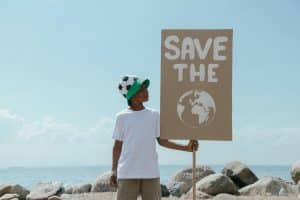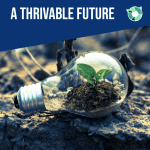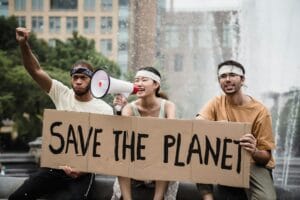
Source: Vishnu R Nair via Pexels
Everyone has heard about the drama created by the kiss-cam at that Coldplay concert. But have you heard about Coldplay’s goal for the latest tour? Coldplay and their team have made impressive and inspiring efforts to make their Music of the Spheres world tour their most sustainable yet!
Before embarking on their current tour in 2022, Coldplay decided on three key principles to guide them towards their sustainability goals:
- REDUCE: Reduce our consumption, recycle extensively and cut our CO2 emissions by 50%.
- REINVENT: Support new green technologies and develop new sustainable, super-low carbon touring methods.
- RESTORE: Make the tour as environmentally beneficial as possible by funding a portfolio of nature-and-technology-based projects and by drawing down significantly more CO2 than the tour produces (Coldplay, 2025).
On June 3rd, 2024, the band posted their Tour Emissions Update, revealing that the emissions from the first two years of their tour had measured in at 59% less than their previous stadium tour in 2016-17. These figures were verified by Professor John E. Fernandez of the MIT Environmental Solutions Initiative.
So how did they do it?
Reducing CO2 Emissions:
As well as partnering with DHL to manage emissions from freight and transportation, Coldplay avoided using fossil fuels, focusing on reusable and sustainable biomaterials wherever possible. For trucking and generators, a palm-oil-free HVO-type (Hydrotreated Vegetable Oil) biofuel is used. Produced from primarily waste materials such as used cooking oil, it has been demonstrated that HVO fuels reduce carbon emissions significantly (Dobrzyńska et al., 2020). When it’s impossible to avoid air travel, the team pays a surcharge or supplies Sustainable Aviation Fuel to reduce greenhouse gas emissions by up to 80% when compared to conventional fossil jet fuel.
CO2 Draw down:
Aware that the tour would still have a significant carbon footprint regardless of their efforts, they also pledged to draw down more CO2 than they produced. This was achieved through investments in reforestation, rewilding, conservation, soil regeneration, carbon capture, and renewable technology. This also involved the planting and lifelong protection of millions of trees, including one tree planted for every ticket sold.
Renewable Energy:
Each Coldplay concert begins with the installation of solar photovoltaic panels, so they can begin charging the show’s batteries as soon as the team arrives at the location. These batteries were made in conjunction with BMW and power the show with 100% renewable energy. Fans can also help to recharge batteries by using the electricity-generating power bikes, or simply by enjoying the show on one of the kinetic floors installed around the stadium, which convert the movement of dancing and jumping into energy.
Rider Requests and Supporting Venues:
Instead of requesting a koi pond or bowls of M&Ms sorted by colour like other artists, Coldplay’s rider requests that their venues use the best environmental practices. This includes requesting that venues introduce water-saving measures like aerated taps, low-flushing toilets, and reduced water pressure. Venues are also assisted in establishing recycling programmes if they do not already exist.
Empowering Fans:
Partnering with SAP, Coldplay developed a free tour app for fans to download. Aside from measuring the carbon footprint of fans’ travel to and from shows, the app also offered discount codes to reward fans who chose low-carbon methods of travel. Fans are also encouraged to bring a water bottle with them, which they can fill at the refill stations available.
Keeping it Local:
Local equipment and materials are used wherever possible to reduce freight emissions. Catering menus for the tour crew (which have plant-based and meat-free options as standard) are made from organic produce sourced from local suppliers that practice regenerative agriculture techniques. Surplus food is donated to local food banks wherever possible, and waste is composted.
Rethinking, Reducing, Reusing:
Lighting and audio has been adapted to use 50% less power consumption compared to previous tours. The LED wristbands worn by the audience are 100% compostable, and around 86% of them are returned, sterilised, recharged, and reused. Even the confetti and pyrotechnics have been made from biodegradable and recyclable materials, using altered formulas for compressed gas, ignition, and explosive charges that reduce or eliminate the use of harmful chemicals. Merchandise is sustainably and ethically sourced. Wherever possible, plastics are replaced with natural fibres and recycled/recyclable materials.
Working with Others:
In order to produce merchandise or sell refreshments, vendors must prove ethical work practices, including fair wages and good working conditions. As always, 10% of everything Coldplay earns goes directly to good causes such as ClientEarth, The Ocean Cleanup, and One Tree Planted.
It’s great to see how much effort Coldplay are putting in to reducing their carbon footprint and building a more thrivable world! For more Thrivable news, subscribe to our Newsletter.
Why trust us?
At THRIVE Project, we’re all about facts that matter—and a future that flourishes. Our team of researchers, writers, and thrivability experts dig deep into the science so you don’t have to. Everything we publish is based on credible sources, double-checked for accuracy, and written with one goal in mind: helping you make sense of the world and how to improve it. We’re independent, non-profit, and here to spark real change with knowledge you can count on. Find out more about our team.
– THRIVE Project























